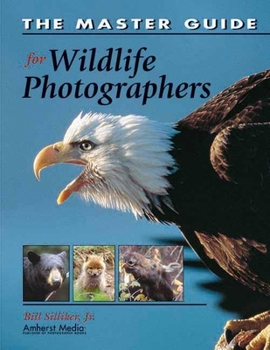The Master Guide for Wildlife Photographers
Select Format
Select Condition 
Book Overview
Detailing the knowledge required to obtain professional-quality wildlife photographs, this book outlines techniques usually reserved for hunters to get close to animals to produce intimate portraits... This description may be from another edition of this product.
Format:Paperback
Language:English
ISBN:1584281146
ISBN13:9781584281146
Release Date:November 2003
Publisher:Amherst Media
Length:128 Pages
Weight:1.20 lbs.
Dimensions:0.4" x 8.6" x 11.1"
Customer Reviews
3 ratings
Excellent Book on Wildlife Photogrpahy
Published by Thriftbooks.com User , 17 years ago
This book is an excellent book for amateur wildlife photographers. Compared to other wildlife photogrpahy books I felt this was ideal for beginners. It wasn't overly complex and I completed the book with a several clear, concise takeaways.
Top Five
Published by Thriftbooks.com User , 18 years ago
I own about 30 Photography books,and this one by Bill Silliker is in the Top Five...Closer to one then five.
A Good Introduction to Wildlife Photography
Published by Thriftbooks.com User , 20 years ago
The late Bill Silliker, who wrote this book, was famous for his pictures of moose and loons. In fact he loved to be called the Mooseman. The Mooseman?s last book is an introduction to wildlife photography, aimed primarily at the beginning and intermediate photographer, although there are a few discussions that may cause the advanced wildlife photographer to reconsider his techniques.The book, written in simple, direct, clear style, describes the fundamentals to be applied to get good wildlife pictures. After the required discussion of equipment (Silliker prefers 35mm single-lens reflex cameras, long telephotos, autofocus and sturdy tripods), he spends a quarter of the book discussing metering and focussing techniques for wildlife in clear, comprehensive language. The length of this discussion surprised me, but it is all relevant. He then goes on to consider how to get close enough to animals to get pictures with impact, and composition. I was delighted by his no-nonsense approach. Stories about his own exploits are told only when essential to make a point. There is no excess verbiage here.My only complaint about the book is that I wanted a little more. (Having read the author?s magazine columns, I know that he was a thoughtful photographer.) For example, he believes that the limited depth of field of telephoto lenses is something that a photographer has to live with and he suggests ways to compensate for the fact. I would have liked to hear some further discussion of the role that faster ISO media can play in getting greater depth of field, or the fact that for a particular image size and aperture depth of field will always be the same, regardless of lens length. But, of course, that would have been a different book.Silliker also does not dwell upon the use of digital imagery, although he acknowledges it and suggests several other books for the reader who wants to pursue that direction.If you are just getting into wildlife photography, you won?t find a better guide than this. The more advanced photographer may find his thinking stimulated by some of the discussions, but will probably want to explore other works to develop his skills. There are many such works aimed at more advanced photographers, but I would certainly recommend the work of Art Morris and Art Wolfe, both of whom have turned wildlife photography into an art (pun intended but very true.)




